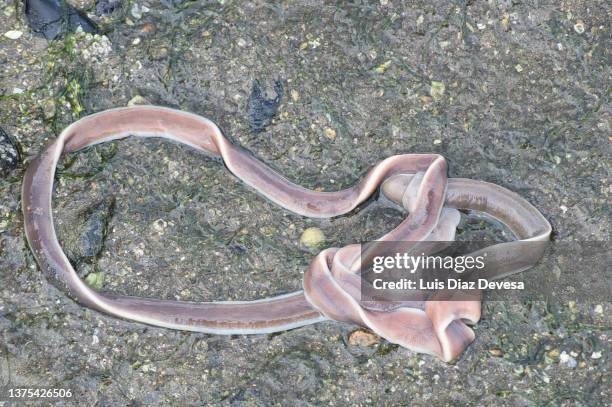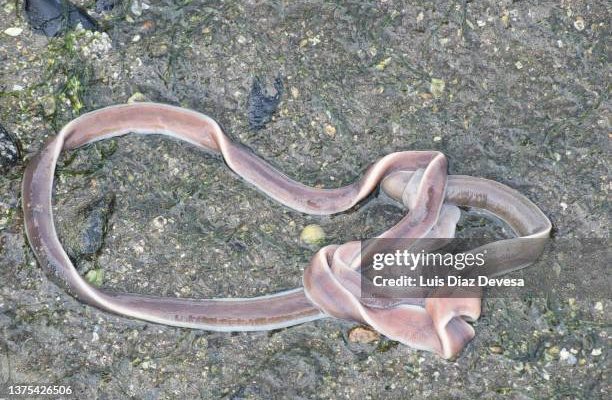
Ribbon worms, scientifically known as *Nemertea*, are long, flexible creatures that can stretch out to impressive lengths—some reaching over 30 feet! They have a unique body structure that allows them to thrive in various environments. Understanding how they behave during low tide gives us insights into their survival strategies and ecological roles. So, let’s dive into this world and explore what these captivating beings are up to when the waters recede.
Understanding Ribbon Worms
Ribbon worms belong to a group of animals called nemerteans, which are sibling to other marine life, like flatworms but with some unique characteristics. These worms often have a long, slender body that can appear in various colors, ranging from brown to bright pink. You might be wondering how they fit into the ecosystem. Well, these creatures play a significant role in their habitat, feeding on tiny invertebrates like crustaceans and even other worms.
During low tides, the landscape shifts dramatically. Parts of the rocky shore that were once submerged are now exposed. For ribbon worms, this means more than just a change in scenery; it presents both challenges and opportunities. Their behavior in these moments reveals their adaptability and survival instincts.
Behavioral Adaptations to Low Tide
When the tide recedes, ribbon worms show remarkable adaptability. They have developed behaviors that help them cope with the changing environment. First and foremost, they might retreat into the sand or mud to avoid harsh sunlight and predators. Imagine you’re at the beach on a scorching day—finding shade becomes a priority, right? Similarly, these worms burrow to maintain moisture and protect themselves.
Another fascinating aspect of their behavior during low tide is their foraging strategy. Ribbon worms often extend their bodies to catch prey that may also be exposed during these periods. Their long, slender form allows them to reach into crevices and hidden spots, much like a skilled treasure hunter searching for hidden gems. They use a special feeding apparatus called a proboscis, which can snap out quickly to capture unsuspecting prey.
The Importance of Moisture
Moisture is crucial for ribbon worms, especially during low tide. Let’s think about it: when the tide goes out, the air can dry out the exposed areas quickly. Ribbon worms rely on the moisture in their surroundings to prevent desiccation (that’s just a fancy term for drying out). To counter this, they often move into crevices or bury themselves deeper into the sediment, where the moisture levels remain stable.
If they can’t find a moist retreat, these worms risk dehydration, which can be fatal. It’s a bit like when you forget your water bottle on a hot day—you’ll seek anything to stay hydrated. For ribbon worms, their ability to sense moisture changes is a survival skill that many organisms wish they had.
Prey Capture Techniques
During low tide, ribbon worms employ clever techniques to capture their prey. Their long and flexible bodies allow them to reach into tricky spots where smaller invertebrates might hide. Once they sense movement, they launch their proboscis, which is equipped with a sticky substance, to ensnare the unsuspecting prey. This method is not just effective but also a testament to their evolutionary adaptations for survival.
What’s especially interesting is that ribbon worms can often consume organisms several times their size. It’s a little bit like a tiny person being able to lift a weight much heavier than them—pretty impressive, huh? This feeding strategy helps them take advantage of the fluctuating availability of prey during low tide.
Interactions with Other Marine Life
The interactions of ribbon worms with other marine life during low tide are essential to understand. These worms aren’t just passive creatures; they play an active role in their ecosystem. For instance, many predators, such as fish and birds, are on the lookout for ribbon worms when they’re exposed during low tide. This means that ribbon worms need to be cautious and strategic about when and how they emerge.
Interestingly, ribbon worms also share their environment with other invertebrates, like crabs and snails. During low tide, competition for resources can be intense. Imagine a crowded kitchen during dinner prep—everyone scrambling for the last slice of pizza. Ribbon worms have to navigate these dynamics carefully, finding shelter and feeding opportunities without becoming someone else’s meal.
Conservation and Habitat Changes
Sadly, changes to coastal habitats can have a significant impact on ribbon worms and their behavior during low tide. Pollution, climate change, and habitat destruction threaten these unique creatures. As the ecosystem shifts, ribbon worms face challenges adapting to the new conditions of their environment.
For example, if coastal development reduces the available habitat, ribbon worms may struggle to find suitable areas for feeding and sheltering. It’s essential to maintain the health of our coastlines to support these fascinating organisms and the intricate web of life they are part of. By understanding their role in the ecosystem, we can take steps to protect their habitats.
In summary, ribbon worms are intriguing creatures that exhibit fascinating behaviors, especially during low tide. From their strategic adaptations to avoid desiccation to their impressive prey capture techniques, these worms show us the complexity of life beneath the waves. As we learn more about their interactions within their ecosystem, we become more aware of the importance of conserving their habitats.
So, the next time you stroll along the shoreline during low tide, take a moment to appreciate these silent survivors making their way through a changing world. Just remember, they might be small and often overlooked, but their stories are part of the larger narrative of marine life—a tale worth telling.

